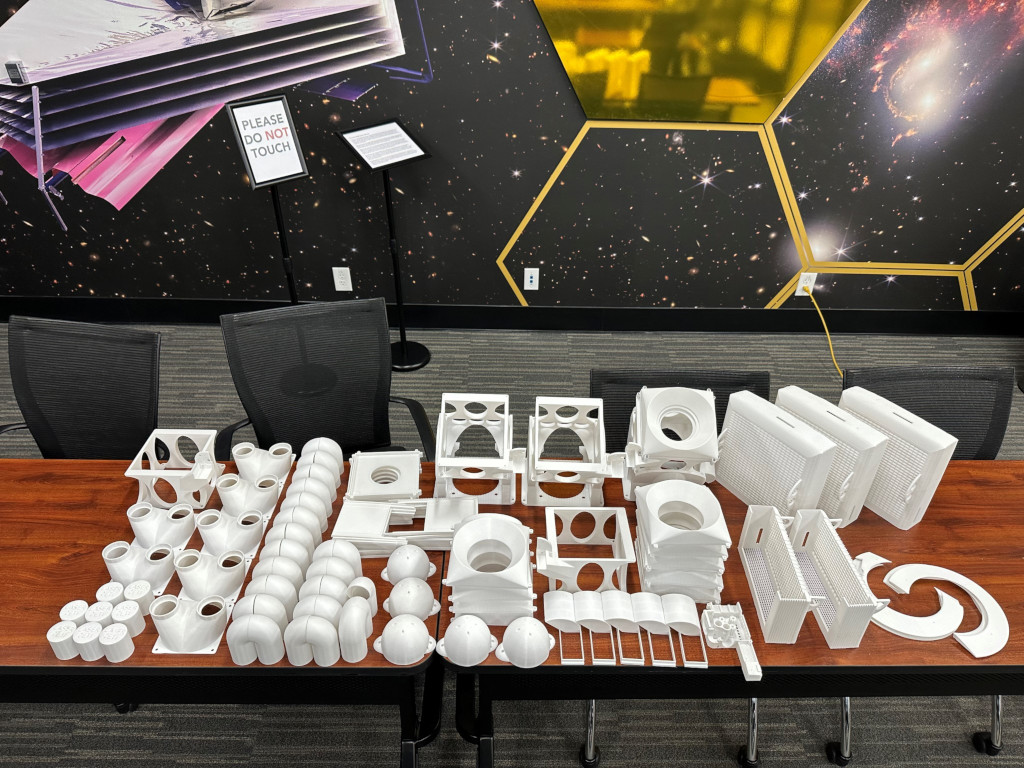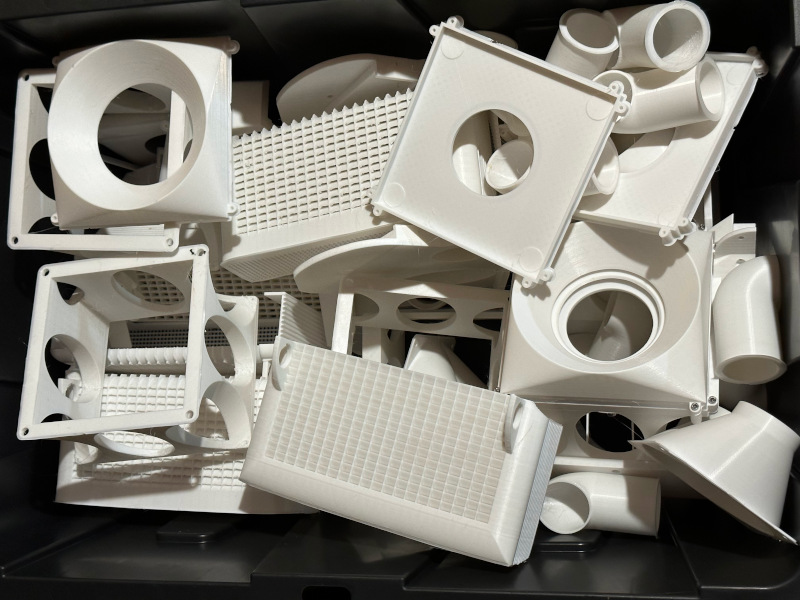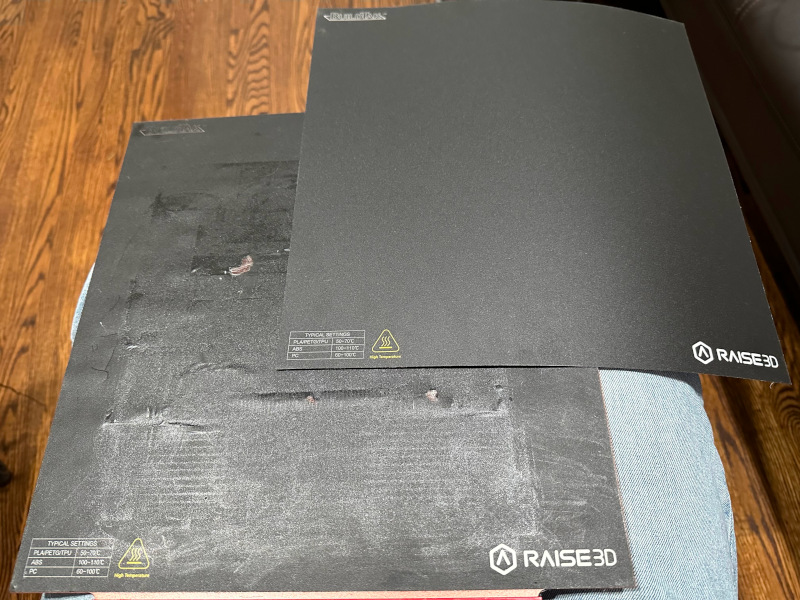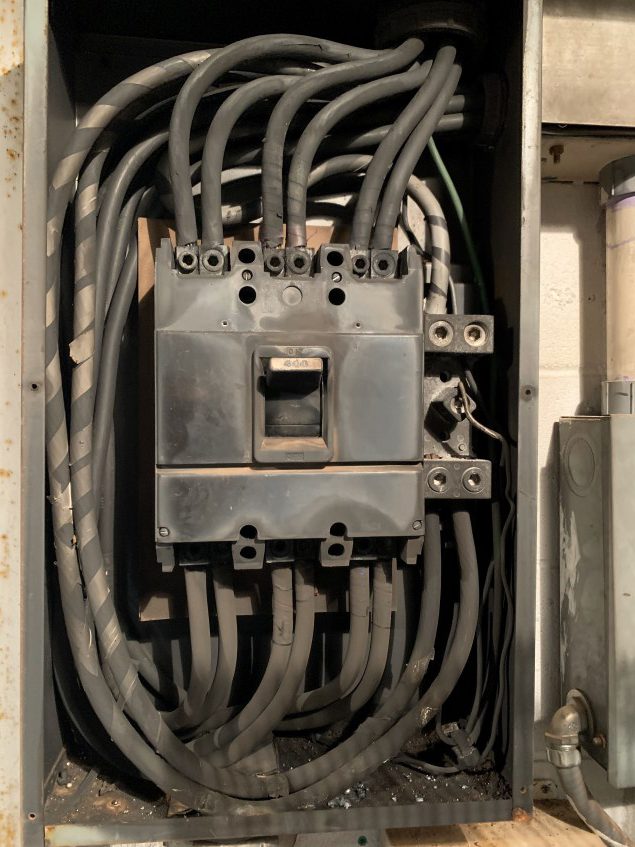High-tech problems? Go low!
Many of LaserSETI’s parts are challenging to print, simply due to the required function of the part and the limitations of Fused Deposition Manufacturing (FDM), aka 3D printing. We’d worked out most of the kinks in the original design of the parts, but one has been giving us trouble.
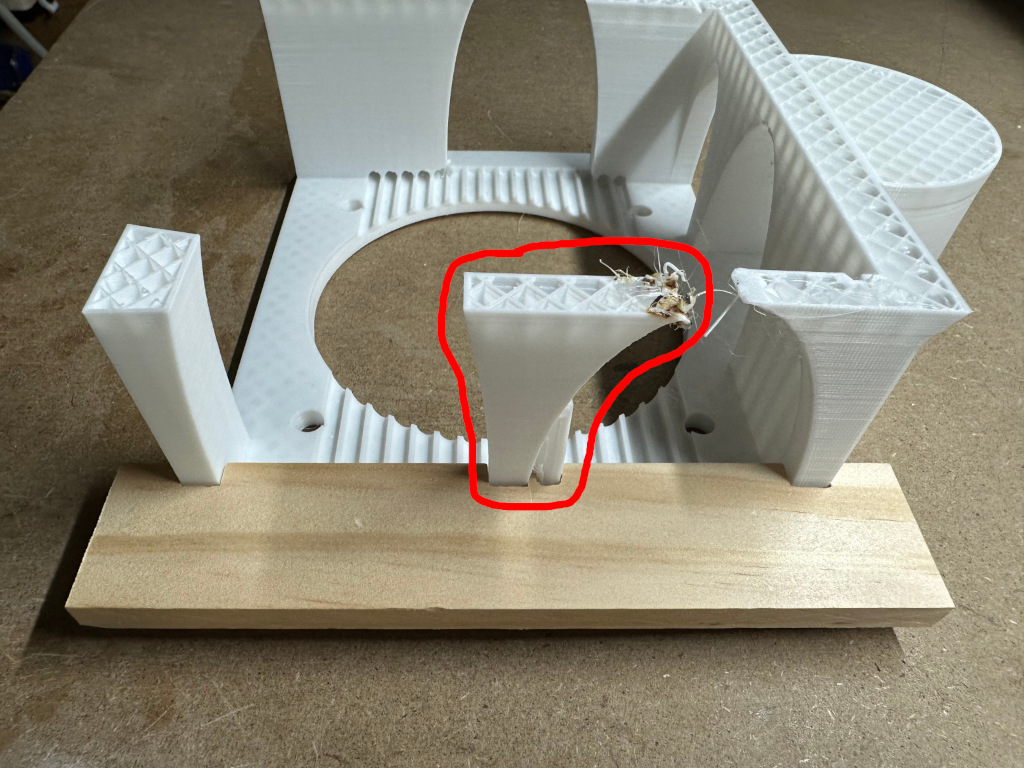
This is the bracket that holds the “horz-cam” but also, underneath in the bay visible above, holds the router that connects all the various computers that make LaserSETI operate and analyze.
The near side is where all the ethernet cables plug in, so obviously can’t be a solid wall. The highlighted support pillar is large enough to grow into the camera bracket higher up, but small enough to not cause a problem with the cables below. But sometimes, if everything below didn’t print 1000% perfectly, it became a long lever arm that got pushed around by the print head and eventually broke off.
It’s a large part, taking 75 hours of machine time and about $15 in raw plastic. So a print failure more than halfway through is a frustrating waste of time, money, and effort. And it’d happened one time too many times. There are a plethora of factors, mainly the printer and type of thermoplastic, but many variables aren’t realistic to control precisely, such condition of the machine, ambient temperature and humidity, feedstock humidity and other imperfections.
We’d tried fixing it “the right way” by printing a support pillar on the side, meant to be broken off once the print job finishes. But it wasn’t getting a solid enough connection to the model and too often failed in its one job.
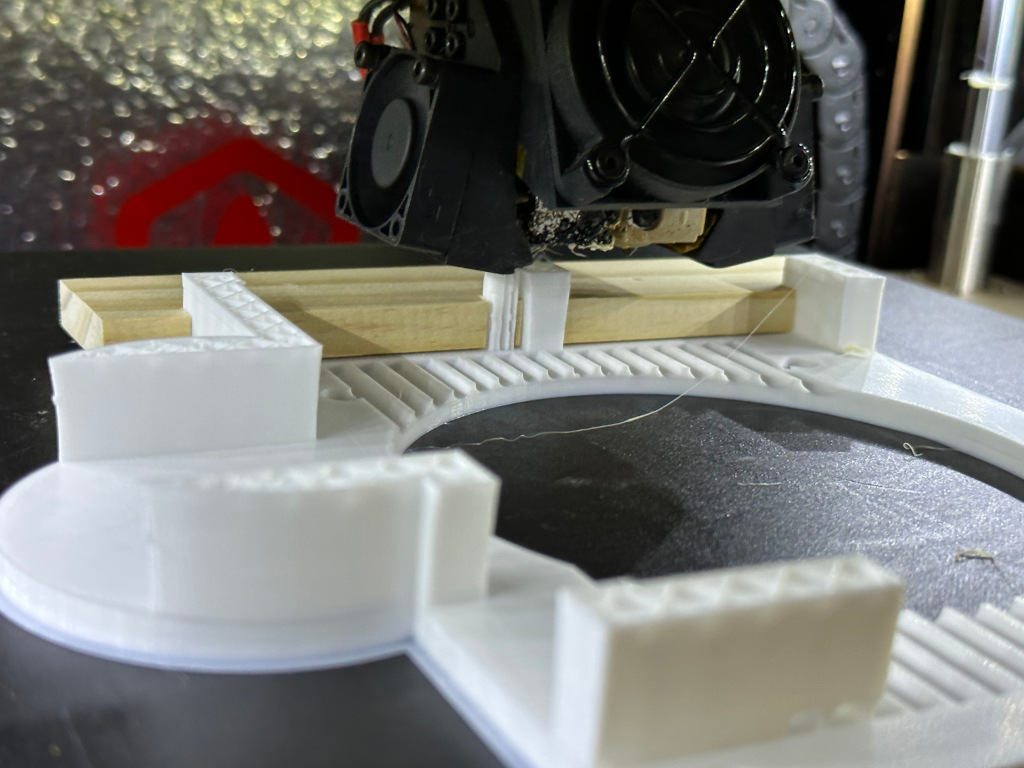
As the saying goes, “if you want something done right, do it yourself.” So we carefully crafted a brace from scrap wood, it fits tightly, and we’re expecting this will get the job success rate up, from maybe 65% to more like 100%!
